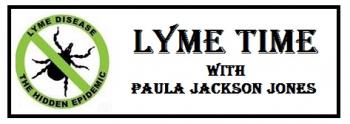Outdoor enthusiasts
Over the Easter weekend, I participated in the 38th annual State of Maine Sportsman Show (Fri., Sat. and Sun.) at the Augusta Civic Center and what an amazing opportunity that was. I met outdoor enthusiasts of all ages, and although their interests may have varied, the concern over tick-borne disease exposure was very real. We spoke at great length with people who were concerned about preventing a tick encounter, noticing at times, the line of people standing around our booth was four and five rows deep. Prevention products flew off our table to the point I was borrowing from Saturday’s inventory on Friday, Sunday’s on Saturday and by Sunday, we were sold out and I needed to step out and replenish our stock.
People were very interested in learning about the fourteen varieties of ticks identified by the University of Maine Cooperative Extension and the diseases that they carried (for both humans and animals). It was real eye opener to some to learn that the deer tick can carry not only Lyme disease, but Anaplasmosis, Babesia and Powassan and that there is no way to tell what they are infected with just by looking at them. With Anaplasmosis and Babesia on the rise in Maine along with Lyme disease, this was a topic of concern that we addressed repeatedly throughout the three-day trade show. We gave a presentation on ‘How Not To Have A Tick Encounter’ each day of the trade show and had a strong attendance each time.
We simply reminded people that no matter what outdoor activity they were interested in, that wearing a repellent of their choice on their skin and treating their clothing or buying clothing already infused with repellent, was the double barrier of protection that they would need against the onslaught of ticks. Many told us that they did one or the other, some walked right up to our table, grabbing the products and proclaiming loudly “This stuff really works!!” to which those walking by would stop and see what all the commotion was about. We covered home, yard and pet protection, partnering up with our Community Partner ‘Dog Not Gone’ who was also there with all their repellent-infused apparel for humans and pets. Many of the clubs and outdoor organizations asked us to come and give a more in-depth presentation to their clubs or provide them with information for newsletters and website (which we do statewide at no charge).
Our booth was in the farthest back corner of the Civic Center and we were not lacking for any attention. Everyone who walked by stopped and either told us that they had Lyme, had had Lyme and/or a tick-borne disease and how difficult a time they had recovering or that they knew of someone who had it. Many found it difficult to get diagnosed and properly treated, some were still symptomatic and thankful for the resources that we offered on the spot. We had the booths around tell us at the end of the day Sunday that they had learned so much just by listening to us all weekend long and that they were impressed with the level of knowledge that we had and the caliber of professionalism and ease of understanding of the information we were delivering. We spoke with people from all over the state and there was no part of the state, rural or urban, untouched by tick infestation or tick-borne disease exposure. Between education and support resources, we were kept busy the entire weekend.
It was heartbreaking to hear stories told by lifelong hunters who no longer hunted or wanted to go into the woods out of fear of contracting a tick-borne disease, of people afraid of walking their dogs due to tick exposure and of the crippling symptoms downplayed by medical providers who told their patients that “with time they would simply get better.” As someone who has spoken to thousands of patients, and in speaking from my own experience, this is not the norm. We don’t just “get better with time.” Many misdiagnosed or undertreated remain symptomatic and find that themselves adjusting to living a debilitative lifestyle, giving up things they enjoy most in life.
As Mother Nature continues to tease us with the idea of spring, prevention should be on the forefront of everyone’s mind, not just the outdoor enthusiasts, because using prevention products allows us to spend more time outdoors, playing, gardening and doing all the things that we love without fear of tick encounters. So, whether your prevention plan includes lotions, sprays or chickens, please remember that as the temps continuing to warm up, prevention is key to staying tick-free!
Paula is the president of the MLDSE, the Maine-partner of the national Lyme Disease Association, member of Maine’s CDC Vector-borne Workgroup, active in Maine’s Lyme legislation and a member of the Access to Care Services and Patient Support subcommittee of the Federal HHS Tick-borne Disease Working Group. You can reach her at paula@mldse.org






















